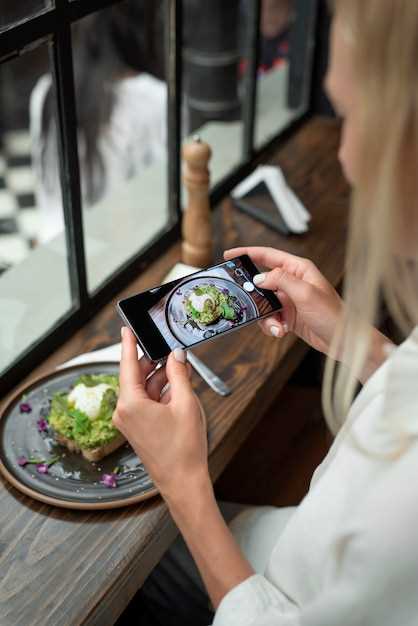Planning a Memorable Corporate Breakfast

Choose a theme that resonates with your team and aligns with your corporate values. A well-defined theme can guide menu selection, decorations, and even conversation starters. For example, an “Around the World” breakfast allows you to include diverse dishes that spark interest and dialogue among participants.
Next, focus on the menu. Offer a variety of options, including healthy choices, vegan dishes, and classic favorites. Incorporate seasonal fruits, gourmet pastries, and high-quality coffee to enhance the experience. Engaging a local bakery or catering service can also add a unique touch that supports local businesses.
Setting the atmosphere is equally important. Opt for a venue that promotes relaxation and conversation, whether it’s an outdoor patio or a spacious conference room with natural light. Deploy comfortable seating arrangements that encourage interaction, while simple décor elements can reinforce the theme and create a welcoming vibe.
Don’t forget to include engaging activities. Incorporate icebreakers or themes related to your corporate culture to create an enjoyable environment. Short presentations or team-building exercises can not only break the ice but also foster collaboration and motivation among employees.
Collect feedback afterward to improve future events. Simple surveys can help you gain insights into what worked well and what could be enhanced. This commitment to refinement will show your team that their experience matters, paving the way for even more memorable corporate breakfasts in the future.
Understanding the Purpose of Your Corporate Breakfast

Clarify the goals of your corporate breakfast early. Determine whether to build relationships, share knowledge, or promote your brand. Concentrate on one or two objectives to streamline communication.
Build Relationships
Strengthening connections among team members and clients is a primary goal. Use informal settings to encourage open dialogue and networking. Encourage attendees to share personal anecdotes to foster camaraderie.
- Incorporate icebreaker activities.
- Provide a seating arrangement that mixes different departments.
- Encourage team members to invite guests for diverse interactions.
Share Knowledge
Facilitate learning by inviting speakers or hosting panel discussions. Tailor topics to resonate with the interests of your audience. Ensure that presentations are engaging and concise.
- Select relevant themes that relate to industry trends.
- Include Q&A sessions to encourage participation.
- Follow up with resources or recorded sessions for later access.
A clear understanding of your objectives will guide planning, ensuring the event achieves its intended outcomes while leaving a lasting impression on attendees.
Setting a Budget: What to Consider for Breakfast Events

Define your budget early on to streamline planning and avoid overspending. Begin with the number of attendees, as this will influence food, venue, and decoration costs. Estimate a cost per person; this can range from $10 to $50, depending on whether you choose a simple buffet or a catered breakfast with gourmet options.
Venue and Location
Choose a suitable venue that aligns with your budget. Renting a conference room in a hotel might be costlier than utilizing a company’s cafeteria or an outdoor patio. Consider accessibility for attendees to reduce transportation costs or the need for additional parking facilities.
Food and Beverages
Plan meal options that suit a variety of dietary needs. Buffets can offer flexibility but may require higher staffing for setup and cleanup. Factor in beverage options such as coffee, tea, and juices. Bulk ordering or partnering with local caterers can help reduce expenses while providing quality service.
Don’t forget to include additional costs like tableware, linens, and decorations that enhance the atmosphere without breaking the bank. Aim for a balance between quality and cost to ensure a memorable breakfast experience for all participants.
Selecting the Right Date and Time for Maximum Attendance

Choose a weekday morning, typically Tuesday or Wednesday, as these days show higher attendance rates. Monday mornings can be hectic as employees catch up on work, while Fridays often see early departures or plans for weekends.
Avoiding Holidays and Major Events
Steer clear of holiday weekends or significant events in your industry. Check local calendars for conferences, trade shows, or public holidays that might conflict. A crowded event can deter attendance.
Consider Time Zones
If your team is spread across multiple time zones, aim for a time that accommodates the majority. Late morning slots, such as 9:00 AM or 10:00 AM, often work well for participants from different regions. Gather feedback from attendees on their preferences, if possible.
Always confirm the date and time well in advance. Send out calendar invites and reminders leading up to the event. This approach keeps your breakfast on everyone’s radar, enhancing the chances of strong participation.
Choosing the Ideal Venue for Your Office Breakfast
Select a venue that promotes a relaxed atmosphere conducive to networking and conversation. Consider local cafés or restaurants that offer private dining spaces. These can create an intimate environment while still providing professional service.
Evaluate the location’s accessibility. Aim for a central place where most employees can arrive with minimal effort. If the venue is too far or difficult to reach, attendance may suffer. Public transport options and parking availability enhance convenience.
Inspect the venue’s seating arrangement. Look for flexible layouts that can accommodate different group sizes. Round tables often encourage discussion, while long tables can be excellent for larger gatherings.
Check the availability of necessary amenities. Ensure the venue has audio-visual equipment if presentations are part of the agenda. A reliable Wi-Fi connection is also a plus for any tech needs.
Review the menu options. Breakfast should cater to diverse dietary preferences. Include vegetarian, vegan, and gluten-free selections to ensure everyone feels included. Discuss customization with the venue to align with your goals.
| Factor | Recommendation |
|---|---|
| Location | Choose a central space with good transport links. |
| Seating | Opt for flexible layouts to facilitate interaction. |
| Amenities | Ensure access to AV equipment and high-speed internet. |
| Menu | Include diverse dietary options for inclusivity. |
Consider the ambiance of the venue. A bright and airy space can uplift spirits and set a positive tone for the morning. Natural lighting and appealing décor contribute to an inviting atmosphere.
Prioritize venues with a reputation for excellent service. Staff should be attentive and responsive, contributing to a smooth experience for all attendees. Reviews and recommendations can provide insight into service quality.
Finally, confirm the venue’s capacity to handle your group size comfortably. It’s better to have a bit more space than to feel cramped. Balancing these factors will lead to a rewarding breakfast experience that participants will remember.
Designing an Appealing Breakfast Menu: Key Considerations
Begin with variety. Include a mix of savory and sweet dishes to cater to diverse palates. Consider traditional breakfast offerings like scrambled eggs, bacon, and assorted pastries alongside healthier options such as yogurt parfaits, smoothies, and whole-grain toast. Highlight local flavors or seasonal ingredients to create a unique experience.
Dietary Preferences
Account for dietary restrictions by incorporating vegetarian, vegan, and gluten-free options. Label all dishes clearly to help guests make informed choices. This simple step shows that you value their needs and enhances their satisfaction.
Presentation and Service Style
Focus on presentation. Use attractive platters and serving dishes that enhance the visual appeal of the menu items. An aesthetically pleasing layout can spark interest and encourage guests to try a bit of everything. Consider a buffet-style setup for easy access, or plated service for a more formal approach, depending on the tone of the event.
| Menu Item | Description | Dietary Information |
|---|---|---|
| Scrambled Eggs | Fluffy eggs seasoned with herbs | Vegetarian |
| Vegan Smoothie Bowl | Blended fruits topped with granola and seeds | Vegan, Gluten-free |
| Assorted Pastries | Selection of croissants, danishes, and muffins | Contains gluten |
| Greek Yogurt Parfait | Layered yogurt with fresh berries and honey | Gluten-free |
Finally, consider beverage options. Include coffee, tea, juices, and a refreshing infused water station. This enhances the overall experience and allows guests to tailor their drinks to complement their meals.
Finding Reliable Breakfast Catering Services
Seek out catering services that have a proven track record in breakfast options. Ask for recommendations from colleagues or look for online reviews to identify reliable providers.
Prioritize companies that offer a diverse menu. Aim for a selection that includes vegetarian, gluten-free, and vegan choices to accommodate different dietary needs. Reach out to caterers and request sample menus to gauge their offerings.
- Experience: Choose services with experience in corporate catering. Inquire about past events they’ve handled and their client satisfaction rates.
- Communication: Effective communication is key. Ensure the caterer is responsive to your inquiries and open to customizing the menu.
- On-time Delivery: Confirm their punctuality through reviews or direct questions. Timeliness can significantly impact your event’s success.
Check if the caterer provides setup and cleanup services. Having support for these tasks allows you to focus on your meeting or event.
- Request references from previous clients.
- Inquire about food sourcing and quality standards.
- Evaluate pricing structures for transparency.
Visit local food fairs or expos where caterers showcase their services. This gives you an opportunity to sample their offerings before making a decision.
Once you narrow your options, schedule tastings with your top choices. This personal experience can help you make the best choice for your corporate breakfast.
Incorporating Dietary Restrictions and Preferences
Request guests share their dietary restrictions ahead of time. This allows you to curate a menu that caters to various needs. Include vegetarian, vegan, gluten-free, and nut-free options to ensure there’s something for everyone.
Menu Options
Feature a mix of dishes that accommodate different diets. For example, offer a hearty grain bowl that can be customized with toppings like avocado, nuts, or grilled vegetables. Consider including items like fruit platters, yogurt parfaits, and a selection of pastries that cater to different preferences.
Clear Labeling and Communication
Label each dish clearly, indicating ingredients and any potential allergens. This transparency helps guests make informed choices. Create an engaging way for attendees to communicate preferences, perhaps through a simple survey or RSVP form.
Lastly, consider hiring a catering service experienced in handling dietary needs. Their expertise can greatly enhance the overall experience and ensure everyone feels included and satisfied. Maintaining this focus reflects a considerate company culture.
Engaging Activities to Include During the Breakfast
Incorporate a brief icebreaker session to kick off conversations. Use a fun question related to the day’s focus to encourage attendees to share their thoughts. This sets a relaxed tone and helps break down barriers.
Arrange for a quick team trivia game. Create questions based on the company’s history, values, or fun facts about employees. This not only entertains but also educates participants about the organization.
Consider inviting a guest speaker for a short motivational talk. Choose someone whose expertise aligns with the company’s goals. This adds value and inspires employees while they enjoy their meal.
Around the tables, place cards with prompts for discussions. These can focus on topics like personal achievements or upcoming projects. This encourages mingling and sharing different perspectives.
Use a feedback wall. Set up a area where employees can write their thoughts or future ideas on sticky notes. This fosters engagement and invites participation in shaping the company’s direction.
Include a photography corner with props. This allows teams to capture moments, creating a relaxed atmosphere and producing shareable memories for social media.
Creating Invitations: How to Spark Interest and Attendance
Design visually appealing invitations that catch the eye and reflect your company’s branding. Use bright colors, engaging fonts, and a clean layout to create an inviting look. Highlight the breakfast theme with images of breakfast items or a cozy setting.
Craft a compelling subject line if sending via email. Use phrases like “Join Us for a Delicious Breakfast Experience!” to grab attention. Personalize the invitation by addressing recipients by name, which makes them feel valued and important.
Clearly state the purpose of the breakfast and its benefits. Will there be networking opportunities? Speakers sharing valuable insights? Make this information prominent to entice attendance.
Include essential details such as date, time, location, and RSVP instructions. Provide options for dietary preferences to accommodate everyone, demonstrating thoughtfulness and inclusivity.
Send out invitations at least two weeks in advance to give participants ample time to respond. A reminder one week before the event can boost attendance, ensuring your breakfast is well-attended.
Finally, create a sense of urgency. If there’s limited seating, mention it to encourage quick responses. Incorporating these strategies will generate excitement and increase the likelihood of a successful breakfast event.
Logistics: Managing Setup and Cleanup Efficiently
Prepare a detailed checklist before the event. Include all items needed, such as tables, chairs, utensils, and food items. Assign specific tasks to team members to ensure everyone knows their responsibilities. This clarity minimizes confusion and speeds up the process.
Setup Tips
Arrive at the venue early to start the setup. Begin with the layout: position tables for easy access to food and networking. Consider flow to avoid congestion. Use tablecloths and decorations that align with your brand to create an inviting atmosphere. Set up a designated area for drinks separate from food to streamline movement.
Cleanup Strategies
Arrange for trash bins and recycling stations throughout the area to encourage cleanliness. Designate a cleanup crew before the event begins. This team should tackle tasks in stages, starting with clearing food items and then cleaning tables and equipment. Collect feedback after the event to identify ways to improve future setups and cleanups.
Utilize a trafficking system for collecting feedback to enhance efficiency. This could be a simple survey or verbal feedback during a follow-up meeting. Each insight helps refine processes and improves the experience for attendees.
Measuring the Success of Your Corporate Breakfast
Set clear objectives prior to your event. Whether your goal is to strengthen team collaboration, share important updates, or build client relationships, defining specific outcomes will guide your assessment.
Collect Feedback
After the breakfast, gather feedback through surveys or informal conversations. Ask participants about their experience regarding food quality, venue comfort, and relevance of topics discussed. Use a mix of quantitative (ratings) and qualitative (comments) data for a holistic view.
Analyze Attendance and Engagement
Track attendance rates compared to your invite list. High turnout suggests your event resonated well with attendees. Also, observe engagement levels during discussions; active participation indicates genuine interest. Consider offering incentives for early responses to encourage more attendees.
Utilize follow-up actions as a success metric. Monitor how many participants act on the information shared or engage in post-event discussions. This can reveal the breakfast’s influence on future collaborations or projects.
Regularly review and adjust your approach based on this data to enhance future corporate breakfasts. This practice keeps your events relevant and impactful, ensuring they continue to meet the needs of your organization.
Gathering Feedback for Future Breakfast Events
Send a quick survey to attendees within 48 hours after the breakfast. Use simple online tools like Google Forms or SurveyMonkey. Ask specific questions about food quality, venue setup, and time management.
Key Questions to Include
- What did you think of the food options? Were there enough choices?
- How was the seating arrangement? Comfortable and conducive to conversation?
- Did the event length feel appropriate?
- What topics or speakers would you like to see at future events?
- Any other suggestions for improvement?
Encourage open-ended responses to gather detailed insights. Recognize and analyze recurring themes in the feedback to identify strengths and areas for enhancement.
Incentivizing Feedback
Consider offering a small incentive for completing the survey, like a gift card or a raffle entry. This can boost response rates and make attendees feel valued.
Share a summary of the feedback with all participants. Highlight how their input will shape future events. Keeping communication open fosters a sense of community and demonstrates commitment to improvement.
Video:
Best Bed and Breakfast Breakfast Ideas | Eps. #306
Best Bed and Breakfast Breakfast Ideas | Eps. #306 by Keystone Hospitality Property Development 4,377 views 2 years ago 9 minutes, 21 seconds
Q&A:
What are some key elements to consider when planning a corporate breakfast?
When planning a corporate breakfast, it’s important to consider several factors to create a successful event. First, think about the guest list and tailor the invitation accordingly. Next, choose a suitable venue that accommodates the expected number of attendees comfortably. The menu should include a variety of options that cater to different dietary preferences, such as vegetarian, gluten-free, and dairy-free choices. Additionally, consider the timing of the breakfast – it should allow for a relaxed atmosphere while still being conducive to networking or meetings. Lastly, incorporating elements like theme decor, music, or guest speakers can enhance the experience and make it more memorable.
How can I ensure that the breakfast menu is appealing to all attendees?
To create an appealing breakfast menu for all attendees, it’s advised to offer a diverse selection of dishes. Include classic breakfast items like eggs, bacon, and pastries, while also providing healthier choices such as yogurt, fresh fruit, and smoothie bowls. Clearly label each dish with its ingredients to accommodate guests with allergies and dietary restrictions. You might consider surveying attendees beforehand to get their preferences or any specific requests. Providing a variety of beverages—coffee, tea, juices, and water—can also enhance the overall menu appeal.
How can I incorporate team-building activities into a corporate breakfast?
Incorporating team-building activities into a corporate breakfast can be an excellent way to enhance communication and build camaraderie among employees. Consider organizing icebreaker games that encourage mingling and conversation, such as speed networking or sharing fun facts about oneself. You can also introduce short team challenges that can be completed during the meal, like trivia related to the company or industry. To keep things engaging, offer small prizes for winners. Just ensure that activities do not overshadow the dining experience, maintaining a balance between food and fun.
What is the best way to choose a venue for a corporate breakfast?
Selecting the right venue for a corporate breakfast involves several considerations. Look for a location that is easily accessible to all attendees, with options for parking or public transport. The size of the venue should match your guest list, allowing for enough space to move comfortably. Additionally, consider the ambiance—an inviting atmosphere can set a positive tone for the event. Amenities like AV equipment for presentations or free Wi-Fi can also be beneficial. Finally, checking reviews or testimonials from other corporate events hosted at the venue can provide valuable insights into the service and food quality.
What are some memorable themes for a corporate breakfast event?
Choosing a memorable theme for a corporate breakfast can elevate the experience and make it more enjoyable. Popular themes include a “Healthy Start” breakfast focusing on nutritious options, or an “Around the World” theme featuring diverse cuisines from different countries. A “Classic Diner” theme with retro decor and traditional breakfast items can create a fun vibe, while a “Seasonal Celebration” can showcase seasonal ingredients and decorations. Ensure that the theme resonates with the company culture and goals of the event, allowing for a more cohesive experience overall.
What are some key elements to consider when planning a corporate breakfast event?
When planning a corporate breakfast, several key elements should be taken into account to ensure the event is successful. First, the venue is crucial; it should be suitable for the number of attendees and offer the right atmosphere. Next, consider the menu; offering a variety of breakfast options, including healthy choices, can cater to diverse tastes and dietary restrictions. Additionally, the timing of the event is important—scheduling it during a convenient time for participants can lead to better attendance. Finally, think about the agenda; including networking opportunities or speakers can enhance engagement and make the breakfast memorable.
How can I make sure my corporate breakfast is engaging for attendees?
To make your corporate breakfast engaging, start by creating an inviting and comfortable atmosphere. Use appropriate decorations and seating arrangements to foster conversation. Consider incorporating interactive elements, such as icebreakers or discussion topics that encourage participation. Inviting a guest speaker relevant to your audience can also spark interest and provide valuable insights. Furthermore, offering a well-curated menu with both traditional and contemporary breakfast options can delight attendees. Lastly, ensure there are opportunities for networking, allowing participants to connect with each other, which can enhance the overall experience.


